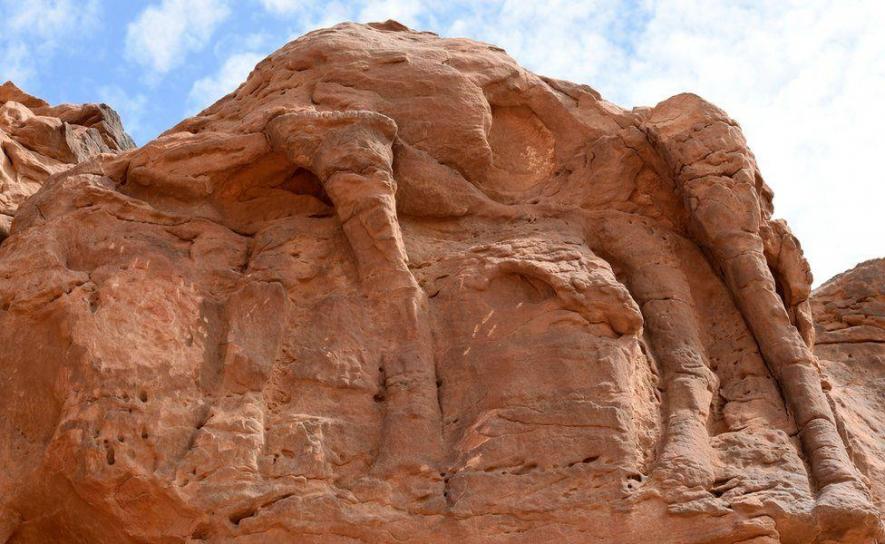Saudi Arabian Animal Sculpture Maybe Older Than the Pyramids and the Stonehenge, Study Finds

Image Source: BBC. Image is for representative use only.
In 2018, archaeologists had discovered rock art of life-size camels in northwest Saudi Arabia, carved into the stones atop a hill. Camel art has been discovered in many other parts of the Arabian Peninsula, however, the newly reported camel site was considered unique in its style and vigour. Back then, Maria Guagnin, an archaeologist from the Max Planck Institute for Science of Human History, was quoted as saying, “This is a major new discovery and in some ways a completely new type of rock art in Saudi Arabia. The naturalistic, almost three-dimensional depictions, are unlike anything else I’ve seen before and highlight the skills of their prehistoric engravers.”
In 2018, the newfound sculptures were thought to be 2000 years old. This dating was based on the similarities between the camel artwork and the reliefs of Jordan’s famous ancient city of Petra. But a new study has reported a possible date of the Arabian sculptures, which has excited scientists and researchers across the world.
The study published in the ‘Journal of Archaeological Science: Reports,’ suggests that the stone art of the camel dates to between 7000 and 8000 years ago. This discovery is important because the new timeline would render the Arabian sculptures the oldest surviving three-dimensional animal relief known so far. The other ancient human-made large sculptures are notably, the pyramids of Egypt, which date back to 4500 years, along with the Stonehenge of England, dating some 5000 years.
The paper was jointly written by Guagnin and Yasser Ali of the Saudi Ministry of Culture.
The researchers dated the sculptures by means of chemical analyses, accompanied by an examination of tool marks found at the site. Commenting on the findings, Guagnin said, “They are absolutely stunning and, bearing in mind we see them now in a heavily eroded state with many panels fallen, the original site must’ve been absolutely mind-blowing. There were life-sized camels and equids two or three layers on top of each other. It must have been an absolutely stunning sight in the Neolithic.”
Ancient artists of the Arabian Peninsula are said to have climbed up to the top of the hills and carved the images in three rocky spurs. The artwork depicts a dozen of camels, along with additional two animals, which could be donkeys or mules.
The Neolithic artists used tools made out of a particular stone, known as chert and they brought this to the site of the sculpture from nine miles away. Researchers also believe that the artists also needed some types of scaffolding to get the tools and the people to the higher parts of the rocks. The artwork is believed to be a communal effort and each of the reliefs took 10 to 15 days to carve.
“Communities of hunters and herders tend to be very dispersed and mobile, and it’s important for them to meet at regular times during the year, to exchange information, spouses and so on. So, whatever the symbolism of the sculptures, this may have been a place to bring the whole community together,” Guagnin said.
Some of the camels in the sculptures have round bellies and bulging necklines, which depicts animals during the mating season. This could suggest that the site was linked to fertility or some specific times of the year.
Guagnin also said that Neolithic communities made repeated visits to the camel site, which indicates that the symbolism and function of the sculptures were maintained for many generations.
She further said that the camels in the sculptures may be wild. The domestication of camels is likely to have taken place around 1200 BC. Neolithic people in Arabia are known to herd cattle, especially sheep and goats and they might have hunted wild camels.
However, there is a growing threat to the site, as erosion is continuously degrading the sculptures and it becomes of utmost importance to preserve the site.
Get the latest reports & analysis with people's perspective on Protests, movements & deep analytical videos, discussions of the current affairs in your Telegram app. Subscribe to NewsClick's Telegram channel & get Real-Time updates on stories, as they get published on our website.














